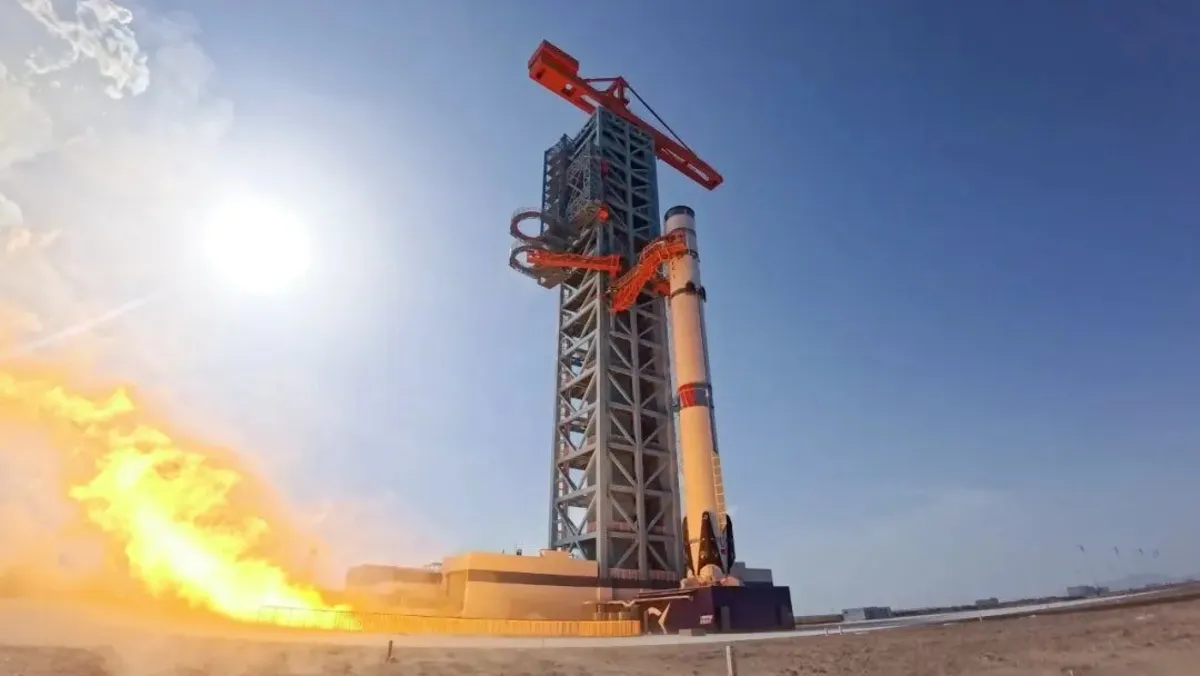
China's first reusable rocket has taken a significant leap toward its inaugural flight. On October 20, the Chinese aerospace company LandSpace successfully conducted a static-fire test of its stainless steel Zhuque-3 rocket. This crucial test keeps the rocket on track for its debut, which is anticipated to occur before the end of the year.
The static-fire test is a vital prelaunch procedure where a rocket's engines are ignited while the vehicle remains secured to the launch pad. This test marked the conclusion of the first phase in the Zhuque-3's maiden flight campaign, which lasted three days. According to LandSpace, this phase also included a fueling test, both of which were conducted at the Dongfeng Commercial Space Innovation Pilot Zone located in northwestern China.
Following the successful static-fire test, the Zhuque-3 will undergo a planned vertical integration rehearsal. After this, the rocket will return to the technical zone for thorough inspection and maintenance, preparing for its upcoming orbital launch and first-stage recovery efforts, as per LandSpace's announcement via X on Monday.
Visually, the Zhuque-3 bears a strong resemblance to SpaceX's Falcon 9 rocket, featuring a reusable first stage and an expendable upper stage. Similar to the Falcon 9, the Zhuque-3's booster is equipped with nine engines, specifically the Tianque-12As, which have been developed in-house by LandSpace. The Tianque-12A engines utilize liquid methane and liquid oxygen (LOX) propellants, distinguishing them from the Falcon 9's Merlin engines, which burn LOX alongside rocket-grade kerosene. Notably, SpaceX's next-generation Raptor engine, used in the Starship megarocket, also employs LOX and liquid methane.
The Zhuque-3 stands tall at 217 feet (66 meters) and boasts a payload capacity of approximately 40,350 pounds (18,300 kilograms) to low Earth orbit (LEO). This capacity is comparable to that of the Falcon 9, which can carry up to 50,265 pounds (22,800 kg) to LEO. The successful static fire on Monday adds to a series of significant milestones achieved by the Zhuque-3, including low-altitude launch and landing tests conducted last year, as well as another static fire carried out in June.
As LandSpace continues to make advancements in its rocket technology, the upcoming launch of the Zhuque-3 will be closely monitored by the aerospace community. This rocket not only signifies China's growing capabilities in space exploration but also marks a pivotal moment in the global landscape of reusable rocket technology.